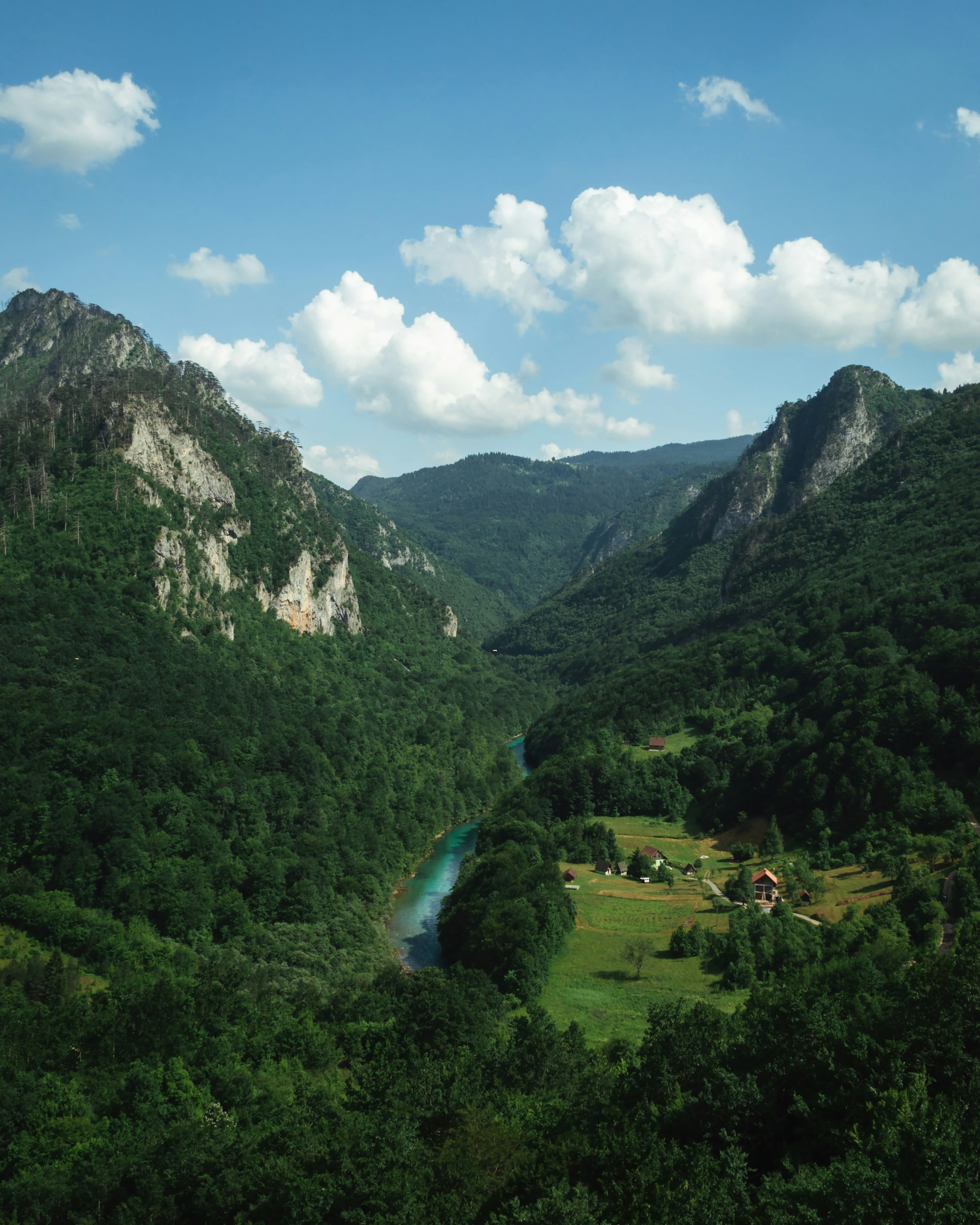The Tara River becomes the Drina at the point of confluence with the Piva near Hum, and is some hundred and fifty kilometers long at that point. In the park, the river has a mean fall of 3.6 meters/kilometer, with a host of cascades, offering whitewater between category 2 and 4.
Extending over 158 kilometers, the Tara River welcomes contributions from 14 rivers, boasting 69 rapids and over 40 cascades, including the prominent Crna Vrela, Bijela Vrela, Djavolje Lazi, Sokolovina, and Bijeli Kamen. The river gets large quantities of water from abundant wellsprings and a few short tributaries. The most important left bank tributaries are the Ljutica and the Sušica, while the most important right bank tributaries are the Vaskovaćka Rijeka and the Draga. The most important wellspring is the Bajlovića Sige, located on the right bank, contributing a few hundred liters per second. The water pouring from the Bučevica Cave falls into the Tara more than thirty metres high, and more than a hundred and fifty meters wide.
The roar from the cascades can be heard from the canyon peaks. Among the more than forty cascades, the most famous are Đavolje Lazi, Sokolovina, Bijeli Kamen, Gornji Tepački Buk and Donji Tepački Buk.
Because of the quality of its water, and because of its unique ecological system, Tara River Gorge earned UNESCO recognition in 1977 as part of the "Man and Biosphere" program (“Čovjek i biosfera”) and entered into the world's ecological biosphere reservations, protecting it under an international convention.
The river, together with the Drina river, is Europe's main habitat and spawning ground for huchen (Hucho hucho).





